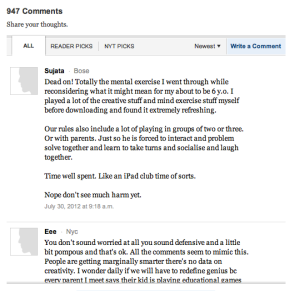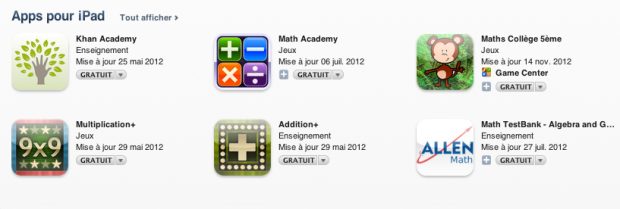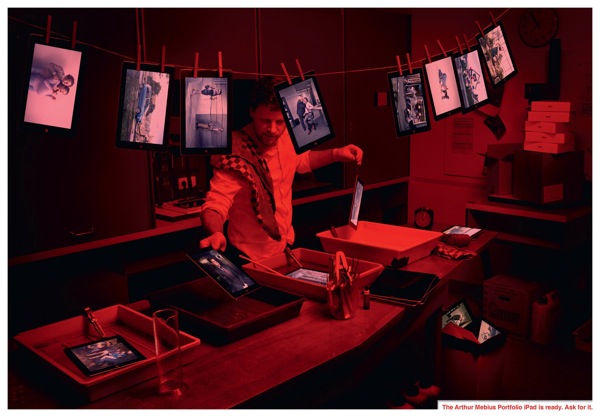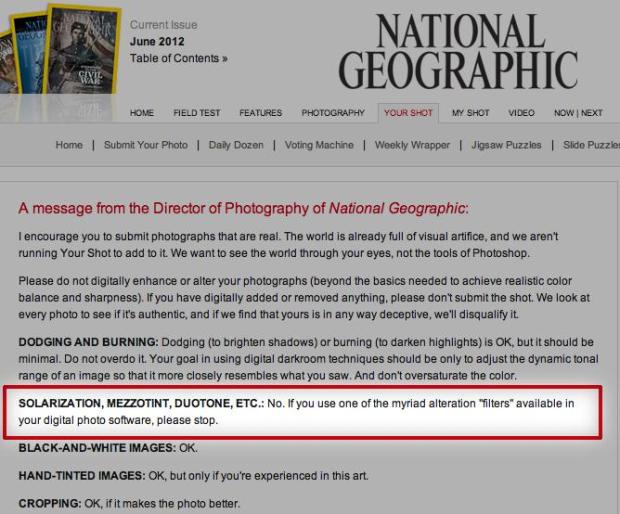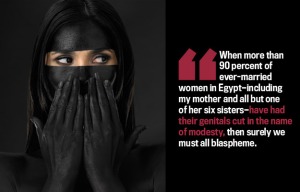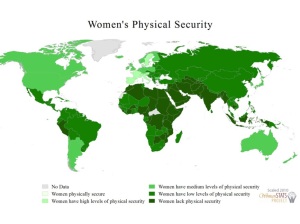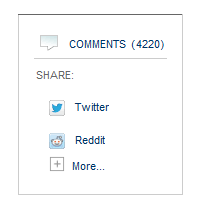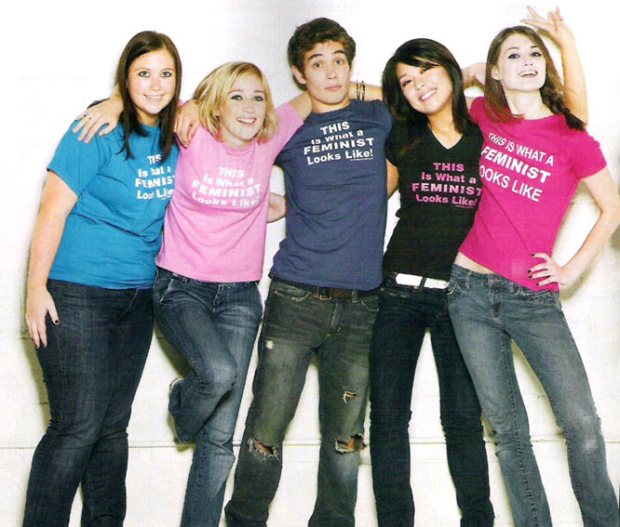Watching TV on two screens
Posted by francoisvermot in Technology on November 27, 2012
Because one screen is not enough, even more people don’t only watch TV passively anymore. Laptop on the knees, it became normal to surf on the web while watching intermittently TV.
Nowadays, the so-called Second Screen applications appear on our tablets, giving additional informations linked with the TV’s main program. Useful ?
A familiy watching religiously at TV in the 50’s. Past times. Nowadays, one screen is not enough anymore.
http://i.dailymail.co.uk/i/pix/2009/10/31/article-1224231-0706B500000005DC-601_634x512.jpg
http://sociable.co/wp-content/uploads/2012/09/second-screen-vizio-tv-ipad3-750×375.jpg
What does the Second Screen brings to us viewers ?
The second screen provides additional informations, in link with what you’re watching on your TV. An international example are the 2012 London Olympics, an event during witch several main TVs transmitted content about the results of the athletes during the broadcasting on the Second Screen.
The Guardian Second Screen, on tablet
Second Screen experiences in Switzerland
A swiss example : the RTS “deuxième écran”
In February 2012, the Radio Télévision Suisse launch its own Second Screen system. Up to now, only one program uses the application : the daily evening news “19:30”. During the program, each time a report is broadcasted, complements become available on the application.
Lets have a look at how it works :
From the RTS website mainpage “deuxième écran” section can be found in “Les plus du web”
Or, it’s possible to acess to it directly following this link.
How does the RTS “deuxième écran” looked like for today’s 19:30 ?

Want to know more about Christian Varone topic ? The second screen gives you more elements.
The second screen doesn’t only proposes texts, but also graphics (for the elections periods for example), videos, pictures galleries, and all wich supports the web can provide.
A video made by the RTS about the “deuxième écran” at the moment of it’s launch :
http://www.rts.ch/video/emissions/grand-angle/3956695-le-deuxieme-ecran-du-19h30.html
Playing with Second Screen
In December, the RTS will launch it’s new general culture game “Les Imbattables”.
The game itself isn’t very innovative (teams composed by a kid and a senior try to answer questions in a quiz). What’s new is the possibility for the viewer to answer actively to the questions on a tablet, trough the Second Screen. As the question is displayed on the TV screen, it appears also on the tablet with the possibility to answer to it.
RTS future game “Les Imbattables” will use since December 2012 the Second Screen technology.
Usefull, the Second Screen ?
Looking at the swiss example of the 19:30 “Deuxième écran”, it certainly provides some additional informations. The graphics are for example interesting, since they appear quite quickly on TV, sometimes too fast to be analysed properly.
But it appears that most of the content of this RTS Second Screen remains quite light, with just short texts, and the videos simply come from the swiss television website. There are no additional videos coming from youtube or dailymotion, no links : nothing that can really bring the user to new way of knowledge.
The Second Screen is but quite a new born. Some time more should be needed in order to see the concept further developed in the future. The TV broadcasters believe in the future of this technology. As does for example David Wertheimer, president of digital at Fox :
The second screen discussion we’ve been having is just one piece of a strategy that’s all about giving our audiences an opportunity to talk about the shows and share thoughts with the showrunners and the talent. To us, that’s what television in the 21st century is all about.
From : http://edition.cnn.com/2012/09/15/showbiz/tv/second-screen-tv-our-mobile-society/index.html
David Wertheimer, president of digital at Fox, believes in the future of the Second Screen.
http://www.adweek.com/files/news_article/first-mover-david-wertheimer-hed-2012.jpg?1345387748
And you,
Are you using Second Screen ? Or do you want to stay an oldschool « couch potatoe » ?
Before Second Screen: couch potatoes. What’s the best ?
http://narcoosseefl.com/wp-content/uploads/2010/12/couch-potato-kid.jpg
Social TV in Switzerland
Posted by sandysulmoni in Entertainment, Technology on November 27, 2012
By Sandy Sulmoni
The new trend? Surfing in internet while you watch TV. But not to get distracted in the net. It’s to do more: interacting with other people and commenting the TV content. Welcome in the era of Social TV!
-
Television + second screen + interaction = social TV
You don’t have to wait for the coffee break of the next day if you want to talk about what you watched on TV, or share the couch with someone else. Thanks to social media, blogs, apps, etc., you can easily comment and discuss TV content live. That’s the goal of Social TV, no matter if it is with Notebooks, Smartphones, or other “second screens”.

Picture modified.
Original Photo: http://www.anywab.com
Let’s check out a Swiss example. The program “Giacobbo/Müller” on the Schweizer Fernsehen has a personal hashtag on Twitter. During a past broadcast, some users shared their opinions about the hosts, but many more discussed the ugly tie worn by one of the two moderators. As this example shows, in some cases reading the comments can be as entertaining as the program itself.
If you speak a little bit of German, I invite you to watch this video summarizing this new way of watching TV, produced by the German broadcaster ARD.
-
Is the Swiss audience modern?
Could we be lagging behind? This phenomenon is on the rise in our country. I’m sure that if I ask how many of you have already used social TV, for example while watching a football match or a TV series, I’d receive lots of positive answers.
Watching television while using internet isn’t so rare. As a study published by Publisuisse shows, this parallel use is the norm for 37% of the people interviewed between 15 and 59 years old. 15% of them exchange comments with other members of the audience about the current TV program they’re enjoying. Concerning the frequency, according to a report written by the firm zehnvier, 20% of the people interviewed watch TV in a social way at least once a week. This most occurs through Facebook (71%), while Social-TV-Apps seem to be not very used.
However, as we can read in the study of Publisuisse, the majority of the experts interviewed (78%) forecasts that watching TV passively will still play a big role in 2017.
-
Some initiatives made in Switzerland
In Switzerland, as well as around the world, companies are beginning to embrace Social TV.
One of the Swiss pioneers is the private channel Joiz. During the 24 hours a day broadcasting, the audience can easily vote, comment, ask questions, etc., through its website, social media and mobile phones apps. Some comments are broadcasted or read live by the moderators.

Facebook messages and tweets are broadcasted and read live
during the programs “JoiZone love” and “Living room”
Source: http://www.joiz.ch
Another example of Swiss initiative is the function “TV Lounge” lanced by the portal Teleboy. Integrated in the traditional TV-Player, “TV Lounge” allows you to see what your friends are watching and to comment, chat or share your opinions on Facebook and Twitter.
Concerning the Swiss public service, SSR SRG is considering Social TV as part of its future strategy. In fact, as said in a press release, it wants to provide the audience new television types by combining traditional television with Internet. For the moment, the “second screen” is being tested by the broadcasting organizations RTS and SRF, while RSI has still to have patience.
As we can see, Social TV seems to become part of our life. Do you think that we will reach the point of seeing the journalists Darius Rochebin, Franz Fischlin or Roberto Cattaneo reading our comments and tweets during the news broadcast?
Social media for Africa development: reality or utopia?
Posted by Jodew in Uncategorized on November 27, 2012
Social media for Africa development: reality or utopia?
Social media for Africa development: reality or utopia?
Let’us ask the question differently: what can social networks bring to Africa? The news of social networks in recent years, allows us to address this topic. Maybe I’m more interested in the issue because I’m coming from Benin in West Africa. I’m studying Master of Journalism and in at the end, social networks have the advantage of changing all the world.http://www.afrik.com/reseaux-sociaux-en-afrique-go-mobile
 This bird has no boundaries
This bird has no boundaries
…and Africa tomorrow
We remember : february 2011, an African dictatorships fell. That of Hosni Mubarak in Egypt. This is the sequence of events that are initiated from Tunisia. Behind these revolutions, unpredictable and unexpected tool: social networks. If the underdevelopment of Africa has long been maintained by dictatorial powers, their downfall should allow the development of Africa with massive participation of people in the conduct of their destiny. Facebook Twitter You Tube and Hi5 are widely used. They induce mutations in many areas.http://www.afriqueexpansion.com/les-reseaux-sociaux.html
In the Maghreb, Facebook and Twitter have been a good levers of the « le printemps arabe. The flow of information brings a profound change in public life and therefore in development. Now, people are actively involved in public debate, give their views and influence policy decisions. A few years ago, it was only a dream. The social network, twitter down the barrier between governments and peoples in Africa: who wants to govern today, will benefit communicate. Be present and active on social networks. The national press agencies, and government presses are not the only ones privileged. Across the continent, the heads of state are followed in their activities. Their press services included that they should not remain outside the boom of social networks. Here, the top 15 in the number of messages sent by the African leaders on Twitter in June 2012.
Finally, the government is closer to people
With an estimated population of just over a billion people, Africa now has 500 million mobile subscribers. Initially, it was just a luxury for many Africans. The mobile phone was used to communicate with family and friends. For their part, cyber-café, not developed enough to offer a big internet access. Now social networks including Facebook and twitter are available on mobile. In 2011, Africa had already 140 million users.http://www.jeuneafrique.com/Article/ARTJAWEB20120628173136/
According to the results of a recent study by the British communications company Portland, here is the map of African twitter users. It covers 11.5 million tweets with messages of 140 characters. Nearly 50% come from South Africa. It is interesting to know that even in countries with poor access to social networks grows rapidly.
Twitter network in Africa
– Facebook has more than 17 million subscribers in Africa, against 10 million in 2009. The number of subscriptions is growng increased. Unlike the situation in other continents. This is what facebook has launched this year, several versions in some major African languages including Swahili, Hausa and Zulu, Facebook announced that it would provide access to mobile users in many countries in Africa.http://www.jeuneafrique.com/Article/ARTJAWEB20120126150955/
– Google announced that it will launch a new service called Baraza. It allow users to interact by asking African and answering questions of local or regional interest.
– The local social networks themselves also develop. These are: Arigator South Africa, Ushahidi in Kenya, Linkedin and Viadeo to Magrheb in sub-sahérienne like Senegal, Benin…
What I think: The advent of democracy in the 90s had raised great hopes. Today, the development dream is not achieved even though there has been progress. Similarly, the growth experienced by social networks for two years must be accompanied in order to contribute effectively to the development of the continent. Countries should develop infrastructure to facilitate access to the internet. Fight against illiteracy. In Africa, social networks are also an effective tool of propaganda used by the government. Care should be taken to the plurality of opinions on social platforms.
If social networks continue to grow effectively, all vital sectors in africa will gain importance.
Can anybody be a journalist?
Posted by romainbardet in Uncategorized on November 27, 2012
Who can be called a journalist? The answer isn’t so easy, but so important in a world where everything goes so fast and information has a great impact on human activities.
Today, almost anybody in the world has a smartphone and an access to the web. Anybody can post a picture, a text or a video and give a sort of information to the world. How? With the new media: Blogs, Facebook, Twitter, Wikipedia or YouTube. Information is so easy and so quickly widespread trough the planet. “Great evolution”, will say the ones. “Disinformation” will respond the others.

Will the professional journalists disappear?
Picture: macalester.edu
The raise of citizen journalism: the new world’s voice
People don’t want to stay silent. For many centuries, journalists have been people’s voices. They found, collected and verified the information and always searched for the truth. But with the Internet’s democratization, people don’t want to wait that the journalists let them speak. They prefer to raise their voice directly and explain or show something to the whole world.
With the advent of Internet 2.0, new media technologies, for example social networking and media-sharing websites, gave citizens the opportunity to give information. Those citizen journalists often report breaking news faster than “normal” journalists. We can cite the events of Arab Spring, which were a lot report by anonymous citizens in the heart of the revolution. Another example of this quick report and exchange of information is the “Occupy Wall Street” movement which debuted on September 17th 2011.

Syrian activists send information with their computer.
Picture: bbc.co.uk
A really actual example is Syrian crisis. The country is closed and inhospitable for the journalists. But Syrian people who live the war post videos and testimonies on YouTube, social media or blogs. They claim their story and give a reality that many journalists just can’t report. It benefits to the citizens in the world, to realize what’s happening there!
Chris Shaw, the editorial director of ITN, a Britannic production society, said to The Guardian that social networks were opening up “whole new vistas for documentary filmmakers. You can make the most amazing films using content from social networks, sometimes with the permission and sometimes without the permission of the people who shot them.”
This reality takes all its sense with the Syrian crisis. “There are places like Syria where journalists haven’t been able to go and […] there is an extraordinary resource on social networks for current affairs, even though we have to take extraordinary caution to verify what we use”, said Chris Shaw.
Let’s see a short funny video, but with interesting points of reflection. “No no, I’m the journalist!”:
Let people participate
What we can observe today, is that many classical media websites give people the possibility to react and deepen the information. You can let comments in the website’s blog for example. Professional journalists are not alone anymore, because readers give a feedback and let them know what they think about the article and more globally about the topic.
Other media are based on the concept that citizens can contribute to the news by giving information or sharing links, but with the control and the work of professional journalists behind. This is the case of Digital Journal or Rue89 in France for example. But is it citizen journalism? I don’t think so. We can call this hybrid journalism, because citizens and professional journalists work together.
 But some websites or blogs are entirely “citizen made”. You, I, anybody can add an article and participate to information’s transmission. But these platforms ask the contributors to share valuable and verified information, and grant themselves the right to remove an inappropriate content. For example, we can mention the Quebec’s website centpapiers or the better known Wikinews.
But some websites or blogs are entirely “citizen made”. You, I, anybody can add an article and participate to information’s transmission. But these platforms ask the contributors to share valuable and verified information, and grant themselves the right to remove an inappropriate content. For example, we can mention the Quebec’s website centpapiers or the better known Wikinews.
American information’s channel CNN launched in 2008 its new participative site: CNN iReport. This website is only based on citizens content. They can post a story, picture, commentary or video and create the news. What is interesting with this concept is that CNN’s journalists sometimes select a subject and diffuse it on the classic channels. With this system, citizens can really be a part of the media agenda setting.
Citizens, yes! Citizen journalists, no!
So where is the difference between a citizen and a professional journalist? Well, let’s go back to the very base of journalism: giving information. Information isn’t just a concept; it’s the reality, the truth, what’s really happening. Yes, journalism is “making information” and transmitting this information to the people; a full-time job!
Here are some answer people gave to the question “Who should be called a journalist?” on ijnet (international journalist’s network):

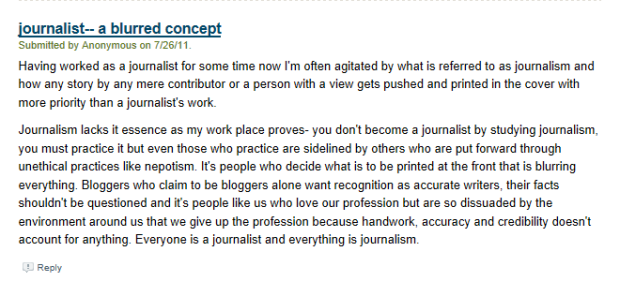

If we set aside the fact that professional journalists work for a media and are paid for this, we must consider that journalists respond to some exigencies and rules. They have to verify the sources, analyze them, explain the events, replace them in their context and be as objective as possible. And the journalists must respect deontological rules. Do the citizen journalists respect those exigencies? Because they must, instead we just can’t call them journalists.
Another point is that a professional journalist isn’t in the commentary when he writes an article. When a citizen journalist writes, we often observe committed comments. Professional journalist informs, when online citizen testifies to what he sees, ears or notices.
But today, citizens contribution is a wealth for journalists. An inexhaustible source of ideas and materials than can be used. And it forces journalists to do their job: treat information and not only transmit it as it is. Citizens make their citizen’s job, when they transmit something important and newsworthy to the journalists.
You’re a citizen, a journalist, or maybe a citizen journalist: what do you think? Leave you comments!
When radio meets social media
Posted by santosbarbara in Uncategorized on November 27, 2012

Source: Ludovic Péron
Reading this article will give you a glimpse to how a Swiss media company succeeded in combining radio and social media. The company created an innovative program where social networks became the source of information.
When the Web 2.0 era first started pointing its nose in our lives, we mostly heard of the incompatibility between traditional media and social media. Today, I am more than ever convinced that both of them can go through life hand in hand. Why so?
By now, if you’re not living like a hermit – but then again if you are reading me right now, you are definitely not ! – you’ll have probably already witnessed the booming use of Facebook comments and tweets on your favorite television programs, no? Well, this practice is already widespread in the USA and is starting to grow in France.
After the celebration of the wedding between television and Twitter, Radio Télévision Suisse (also called RTS) has been willing to provide us with a unique swiss union between the radio and social media. An innovative radio program came to light on February 2012: “En Ligne Directe“. The program is broadcasted on the channel “La Première” and is based on public participation via social media.
However, the radio being a non visual medium, how could such a combination of medias be possible? On the most simplest way. Yes, really! But one should have thought of that. Inspired by the program “Your Call” from the BBC Scotland radio, the idea of RTS is to integrate social media with a radio program thanks to a multimedia team and a facilitator who manages everything together.
Concretely, “En Ligne Directe” is a radio program that will deal, on a day to day basis, with hot issues (either local, national or international) in the form of a debate during which the audience participates. “But the debate is not a new concept “, you say? In fact, what is new in this program is that listeners and Internet users can take part in the debate, not only by telephone but also via social media.
Every evening, one of the program presenters publishes a question to the audience on Twitter, Facebook and on En Ligne Directe‘s mobile application. This question will be the topic discussed on air the next morning.

 |
 |
Internet users can then share their opinions and/or discuss the topic of the day on these social networks. The host of “En Ligne Directe”, Magali Philip, will also take an active part in discussing the topics on the social networks, and this until 10.30pm. She collects the opinions of Internet users posted on social networks.
 |
 |
In parallel, the public also has the possibility to record a voice message via the “En Ligne Directe” mobile application which allows them to send their opinion to the Radio program.
 |
 |
The show is broadcasted every day from 8am to 8.30 am. During those 30 minutes on air, the facilitator summarizes the discussions that took place during the previous evenings on social networks. She also cites comments made by users, and broadcasts few collection of voice messages sent from the mobile application. The program gives the opportunity to listeners that call the studio to have their voice and opinion heard on air. If you click on the following link, you will find a video report realized by RTS about “En Ligne Directe” explaining how the program works. (Video only available in French. Sorry for those who do not understand french).
The combination of all these ingredients is a successful recipe: it gathers 210,000 daily listeners. If you have always dreamt to speak up and give your opinion publicly as well as a fervent news follower, then this program is made for you ! It gives the public the opportunity to take part in the public debate and to contribute to the realization of information (i.e. the idea of citizen journalism).
That’s a good concept for the public, but not only! This program also has benefits for the RTS company. It allows the company to evolve along with social media while taking advantage from them. Indeed, for “En Ligne Directe” social media are not only a source of audience for the program’s web platforms, but also for all the media channels of the company (TV channels, radio channels, Website, etc.). More precisely, the debates taking place on “En Ligne Directe” program are the opportunity to invite Internet users and listeners to learn more about topics treated and in this way it encourages the public to use the information provided by RTS in its various channels.
So this is the way how RTS operates to take advantage of social media – marrying social media with classical media in order to catch the audience attention and staying along with Web 2.0 developments.
Being myself keen on following the latest and “hottest” news, I was excited about the whole concept of the show. However, as all of us out there, I am a terribly busy person and I do not have the time to participate in the debates on social medias. Therefor, no time to listen to the radio at 8am. Although, this is not a problem! The RTS has a solution for every situation! If you can also describe yourself as an extremely busy person, get yourself on Storify as soon as you have a few minutes off your crazy life, and read the discussions’ summary where you will find the best comments and tweets.
 |
 |
So now we know the theory about this innovative media concept, you are probably asking yourself: « In practice, is that complicated? ». The answer is « Not at all » ! The only requirements are: having a phone or Smartphone… but who doesn’t own one nowadays? And being motivated in giving your opinion on a topic, of course!
So, you, dear reader, will you dare in taking part to a debate with all those exciting possibilities to express yourself ?
Crowdsourcing: how is this concept applied to journalism?
Posted by celinebilardo in Technology on November 27, 2012
With the rise of the Web 2.0, more and more people get to express themselves on the Internet: by contributing to a personal blog, answering to a poll on a website or making comments on any event the web is talking about. Today, those contributions can be neatly managed by news organisations to make you participate to their news production. And this is the object of this blog’s entry: crowdsourcing the news.
The crowd likes to be involved
Jeff Howe is the man who coined the term “crowdsourcing” in 2006 in an article called “The Rise of crowdsourcing.” At the time he was a contributing editor of the Wired magazine. Now he tends to be perceived as The Crowdsourcing expert. But you may wonder…
What is crowdsourcing?
As Jeff Howe well expressed it, crowdsourcing is a process of involving the public, the crowd, into a task by an open call. And this process if often made through a website. The definition could include many sorts of calls, indeed. To a large extent, crowdsourcing can be applied to solving a scientific problem, as the company InnoCentive started to do in 2001, or as IStockphotos managed in outsourcing the task of photographing an event to a voluntary crowd instead of hiring a professional photographer for instance.
Crowdsourcing takes many forms. But one thing makes it unique: it empowers the crowd. As the crowd represents different brains, different competences, it can be even more creative, efficient, innovative and influent than a single man working in his office on a task he has no grasp into.
How news organisations make the most of it?
In the context of Journalism, you can well imagine that the journalist and the news organisation one can work for were primarily the only gatekeepers of news, and you were waiting for them to be informed. If there was a place for you to communicate with the newspaper, there was the “letters to the editor”, and not many more.
Today news organisations have their websites. Moreover, if you give a closer look to them, you will notice they even make a space for you to act and communicate. Not by solely adding comments. There is more!
In England, the BBC has launched Have your Say ; in the USA, CNN opened iReport. And the Swiss news organisations are not the last: The RTS has Vos infos and The 20minutes has the Lecteur-Reporter’s platform. All fell in the new trend. They all let you the chance to be part of their work, or in other words: now the news need you.
As a million of events happen across the world, reporters and journalists cannot cover them all. This is where the audience is powerful: it can improve their coverage.
When terrorists set off a series of bombs on buses and subways in London, who produced the most riveting images and sound bites? The passengers and their cell phones.” [1] When an accident occur next to your home, or on your way to work, you are the first witness of the event and no professional reporter could catch the same tension you were able to grasp when it happens.
With a single photo, a video, a short message, you can make a newsroom get up. You can even make it change its editorial agenda.
For Bernard Rappaz, Editor in chief at the RTS in Switzerland, crowdsourcing makes a news media quicker than before. Using Twitter, Facebook, and their crowdsourcing tool on their website, the members of the newsroom can compete with the news agencies they are sometimes dependent on. As Mathieu Coutaz confirms himself: it allows the staff to be the first on the scene and to be always closer to the stories that interest the people their work for.
Mathieu Coutaz is the content manager for 20minutes online in the French-speaking part of Switzerland. The 20minutes is The daily newspaper distributed in Switzerland and this, for free. Its platform “lecteur-reporteur” has been launched in 2006 and the newspaper rewards any contributions that it eventually publishes on its web. What is most, “50% to 70% of the contributions that are selected go on the print edition” Mathieu Coutaz explains. And he emphasises one fundamental point that cannot be neglected: your photos and stories go through a process of verification before getting anything done. “When verified, the contributions of the audience can influence the editorial agenda on the temporal and hierarchical aspects. If it has to be treated before another news, and if the story is worth being published at the top of our agenda, then of course we do it.”
For the one that may want to ask: But isn’t it citizen journalism? In fact, no it isn’t. Robert Niles states this argument in his “Journalist’s guide to crowdsourcing”:
Crowdsourcing does not ask readers to become anything more than what they’ve always been: eyewitness to their daily lives.
In that sense the news organisations save their first role of gatekeepers: the readers don’t write the stories, they only contribute to it: the final decision of its treatement and broadcast still lies in the professional’s hands.
Crowdsourcing at risks
In an interesting article, Darren Gilbert warns that “crowdsourcing can be as advantageous as it can be dangerous.” Although readers are willing to contribute to the news, some are able to get a journalist on the wrong track. He takes the example of a recent scandal that occurred in the United States: a company named Journatic published news gathered from the public. And there were actually wrong!
In Switzerland, all the news platforms I discovered ask for the name and mail address of the contributors, in order to be able to get back to him/her. A mail address can be fake, indeed, but in any case, Swiss news organsations do the verification before publishing, which can avoid some serious faux pas.
To cope it all, crowdsourcing may well bring the public and the news organisation closer than before. It may establish a new relationship between the public and the news media: a trust that could have been lost. But it still needs to be well used in order not to lose what crowdsourcing is for journalism: a relevant tool to make the crowd part of the work, for a better and substantial result.
I am now turning to you
Have you ever contributed to the news of your local newspaper?
What do you think of the crowdsourcing concept regarding journalism?
And to go further…
A new trend in crowdsourcing is for journalists to use special crowdsourcing platforms to gather the information they couldn’t find from their places, such as Ushahidi‘s platform, specialised in mapping crowdsourcing information.
The TED talks also got into the crowdsourcing concept, here is a talk held by Paul Lewis about the impact of crowdsourcing the news for investigative journalism.
And to be always up to date with the last seminars about crowdsourcing and journalism, have a look at the European Journalism Center’s website, it’s worth it!
By Céline Bilardo
[1] Howe, J. 2008. Crowdsourcing: Why the power of the crowd is driving the future of business. 1st ed. USA: Ed.Crown Business. p.212.
Professor iPad: Apple meets education
Posted by unebedjuasse in Technology on November 26, 2012
I don’t have an iPad nor children, for the moment. However during my random train path, in a queue or watching popular videos (lolcats, babies, puppies), I couldn’t miss the fact that many mini-humans already owned an iPad and were very comfortable with it. It seems natural in their small skilful hands, like they have been using them forever: scrolling, zooming, switching applications and so on.
This scene seems more and more natural for me but,
- What implications does it have on the education of the kids at school and at home?
- How does this technological tool reshape education?
- What are the advantages and the downsides of “Professor iPad”?
This is a vast controversy subject and still currently debated. Blogs articles unleash parent’s passions, which are always very reactive when it comes to their heirs. My purpose is not to defend the iPad invasion in the classrooms or to cry wolf but to give an overview of the possibility of an interaction between traditional education and a virtual one.
Mummy, can I have iPad for breakfast please ?
Amazing isn’t it? These kinds of video are blooming on the net for the delight of our zygomatics. What to think of the intrusion of the iPads in our home? A New York Times blogger, David Pogue, has already asked himself: iPad or not ipad that is the question? In his article “A parent struggle with a child’s iPad addiction” the journalist questions his son’s addiction (in his definition of an addiction) for his iPad. After analyzing the benefits and the dangers of the interaction between his son and his tablet, Pogue concluded as follow:
For now, I’m trying to live by the mantra, “Moderation in all things.” As long as iPad use is part of a balanced diet of more physical play and non-electronic activities, I think my little guy will probably be O.K.
The article gave rise to no less than 947 comments…
Following the impact of the post, David Pogue got interviewed on that subject:
So, a key seems to be parental mediation between the kids and the tablet, which is also recommended for television, video games, telephony, internet access and so on.
The pedopsychiatrist Pierre Delion explains, in an interview, that the traditional games shouldn’t be replaced by screens. However, he doesn’t deny the importance of digital tools in our daily routine. He argues in favor of a support of the parents in the children’s discovery of the virtual games so they could understand the relationship between the real and the virtual. Children with communication problems or anxiety could also find a more comfortable relation in the virtual games than in the traditional ones. Professor Delion reminds us that :
Un enfant ne s’éduque jamais tout seul et l’iPad à mon sens ne doit pas être laissé aux enfants avant 9 ans. N’oublions pas que cette tablette reste un portail vers Internet.
The solution would be found in a balance in the private educational environment. The educational games participate in the development and in the creativity of the children. However, time spent with the iPad has to be clearly limited and controlled by the parents. So the relation between the children and the tablet does not fall into an addiction. In addition, Pierre Delion underlines the fact that the interactive games do not improve young children intelligence.
Daddy, can I take my iPad at school?
According to Apple, the iPad seems to be the revolution that the education was waiting since Plato’s Academy, revealed by this official video:
iPad is showing up in peoples’ lives all around the world. Now, when we set out to create the iPad, we set out to create not just a new product, but a new category. Tim Cook
It is obvious that this video shows a 100% positive record of the arrival of theirs tablets in the classrooms. It is shown that the iPad can be used from the maternity to the university. Everything is a matter of application(s). At each age its applications. But what evidence is there of this? Some studies have already addressed the issue.
One of the main studies was carried for Houghton Mifflin Harcourt, a textbook publisher. The aim was to compare the performance of two groups of children at the Amelia Earhart Middle School in Riverside, California. A control group used the traditional Holt McDougal Algebra 1 textbook, while an experimental group used iPads with an interactive version of the same coursework. According to The Economist, at the end of the year: 78% of pupils using the interactive text scored “proficient” or “advanced” on the California algebra test, compared with only 59% scoring likewise with the standard textbook.
Students’ interaction with the device was more personal. You could tell students were more engaged. Using the iPad was more normal, more understandable for them. Coleman Kells, principal of Amelia Earhart Middle School.
Moving textbooks to mobile devices will reinvent learning. Marita Scarfi, CEO of digital-focused marketing agency Organic.
However, the major downside has been enlightened: the cost. The Apple iPads are still a $500-plus investment per unit. Funding is still a problem, particularly for public schools, explains Christina Bonnington for Wired. She says that one of the solutions would be sites like DonorsChoose.org which can provide funds for schools. Anyway, the cost shouldn’t stop us from thinking education in that way.

Source: book cover, Tony Wagner, Creating Innovators: The Making of Young People Who Will Change The World.
The first iPad summit this year supported that of point of view. As a young student present at the summit reported: participants gave all their attention to a single piece of technology and how it might be applied in the realm of education. Tony Wagner, Ph.D. Harvard professor, highlighted the themes of the conference:
We must change the framework of education to reflect what our students need in the world today. Tools like the iPad allow educators and students to be creative, flexible, and innovative in ways never before seen. The same-old-same-old approach in education has only been driving the failure of the American educational system. If we want different results, we need to do something different.
Three main conclusions emerged from this First iPad Summit:
- iPad is simply a tool and not the magical, miracle object that will innovate education by itself
- iPad in the classroom must be linked with professional development
- iPad in education must be more than a replacement program
Bye bye Candy shop, Hello Apple store!
What are the educative applications? There is a certain numbers of applications destined to teach, develop, train, create and so on. Most of these apps have a recreational side which can transform the learning process into a less painful and boring experience for the children. From the most rudimentary to the serious Khan Academy, the Apple store proposes numerous applications for all ages, free as well as charged. Most of these apps work on the logic of a serious game: software that combines a serious intention, like pedagogical, informational, communicational, marketing, ideological or drive with fun. The vocation of a serious game is to make the serious side attractive with an interaction, rules or possibly with play goal.¹
Switch off your iPad, it’s time to go to bed now !
To conclude, the iPad isn’t a magical solution nor will it replace the contribution of a teacher. However, E-learning may allow developing certain abilities in children who are in an environment where the virtual is increasingly present. It’s central that children learn how to use the tools that they will find later in their studies or in their daily life/routine. Like David Pogue reminds us, the secret is in moderation. The iPad summits will certainly improve the knowledge, in a collaborative aim, of the utility and danger of this esthetic tool. The cost can clearly be a barrier to the spread of that product. We shouldn’t forget that education is profitable new market as well as a good way to attract future customers.
Even if there is still a lot to do and to develop around the perspective of e-teaching, I wish all the best for the collaboration between the teacher and the “Professor iPad”.
Education needs you !
read more: http://www.ipadpd.com/blog.html
1: Wikipedia, http://fr.wikipedia.org/wiki/Jeu_sérieux
Instagram: a teen-toy or the new reporter tool?
Posted by leagloor in Technology on November 26, 2012
“Instagram photos cheat the viewer!” Nick Stern’s claim, published in February 2012 on cnn.com, came as a bombshell, engendering pros and cons-reactions in the journalism and photo-reporting world. Who’s right? Let’s have a look!
With more than 30 millions of users and about 150 photographs posted (see article on Wikipedia), the photo-editing and social-networking app Instagram can be described as one of the most successful Smartphone tools. Among its users; teenagers, adults, singers, actors, politicians and, of course, journalists!
Yet the journalistic use of Instagram in a professional perspective has created a huge debate on the web since last February. The vexed question: can journalists and photojournalists honestly use Instagram as a professional tool, to cover a war or a political meeting, or has it to remain a “toy” only good to post pictures of your breakfast or your new nail-art?
 |
Cheating with reality?
For some photographers no hesitation, Instagram has nothing to do with information and journalism. Here are some of their main arguments. But before, here you go with a video that shows you how Instagram works and what are its main features:
Filters and fake emotions
Photographs bring emotion, related to the subject, to the viewer’s history but also thanks to the way the picture is taken. Regarding this, the anti-Instagramers are clear: Instagram kills the authenticity, creativity and originality of your pictures.
For Nick Stern (see the complete article here and his website here), American news photographer and first anti-Instagram pamphleteer, the pictures taken with the app do not communicate real emotions, conveyed by the photographer, as it should. “It’s the work of an app designer in Palo Alto who decided that a nice shallow focus and dark faded border would bring out the best in the image”, he claims, “The image never existed in any other place than the eye of the app developer”.
“The greatest photographs are created in the mind of the photographer and not in the workings of the camera.” Nick Stern
Moreover, with 14 different filters, the variety of pictures is indeed quite large however rather limited. According to its accusers, Instagram creates therefore photographic standards, which enchain the users, kill their creativity and prevent them from expressing their emotions.
But was it not already the case with silver films? Indeed, during the development process, the photographer could use different chemical techniques such as cross-processing and could therefore add something external to the picture.
Aesthetics against information duty
Showing reality objectively is one of the main goals of any journalists. For the anti-Instagramers, using an app that adds effects on a picture in order to make it look fancier or nicer does not fit the profession ethics. That is why Nick Stern says that “Every time a news organization uses a Hipstamatic or Instagram-style picture in a news report, they are cheating us all”.
However aesthetics is a part of photography anyway such as subjectivity. Photographers are dealing with image and cannot completely distance themselves from the visual dimension of their job.
As Joerg Colberg, an American photographer says “We all know that all photography is fiction: as a photographer you make choices, which influence the photograph enough for it to be more of a fiction than a fact. […] But the photojournalist’s task, no actually the photojournalist’s duty is to minimize the amount of fiction that enters her/his photography. […] The problem with InstaHip in this particular context is it adds a huge amount of fiction to photography, simply by its aesthetic” (see the complete article here).
News Trivialisation
Another problem raised by the accusers is that the majority of the Instagram pictures deal with the users’ every day life: meals, hobbies, fashion, cosmetics, friends, family and pets. Mixing serious news pictures with these trivial subjects minimizes their value and their informational impact.
“Since in the dominant context, people’s social lives, InstaHip photographs are usually not seen as particularly relevant, once you use InstaHip as a photojournalist you’re applying that same kind of thinking to your images. You’re trivializing your message.” Joerg Colberg
Why so unserious?
Maybe the solution would be to create a parallel network, which would share the same technical features and would be exclusively destined to news companies, a kind of Infostagram! But we will come back to that later.
The Like button tyranny
As other social networks, Instagram allows the users to share their pictures on other social medias such as Facebook and Twitter and proposes a comment option and a Like button.
American panelists wondered to which extent “Instagram’s Like button, combined with the image filters, has turned the service into performance art, with people trying to rack up Likes for the most aesthetically striking images” explains Steve Myers in his article on Instagram (see the complete article here). A sort of photographic social desirability!
As we will see later, these social network features can also be positive for journalists. In the mean time, to read more about the Like-culture problematic, click here.
Vintage overdose
You can see it in fashion: vintage is trendy! And photography is no exception to the rule. Instagram, with its Instamatic and Polaroid-inspired effect perfectly incarnates this trend (see this article here). But as Jean Cocteau said “Fashion is what goes out of fashion.” Thus, the risk that Instagram becomes outmoded is real.
What risk for journalism then? Since Instagram becomes has-been, the information broadcasted on it will not be seen as relevant by its users or its ex-users. The value of information will be at stake.
Moreover, is not information supposed to be related to the here and now, to the burning issues and not focused on the past?
 Instamatic Kodak 100, 1963 |
 Polaroid One Step, ’80 |
Connecting people?
Does Instagram look like the Devil to you now? Fortunately some positive and helpful aspects can also be highlighted, all related to the social dimension of the app.
Information network
As already said, Instagram is not only a photo-editing app, it also allows the user to create an extended network, to follow people and to get followers. Videos on Youtube actually show you how to be followed by the maximum of users. Do you remember what we have said about the Like button tyranny?
More seriously Instagram can become a real information feed, through the channels of news companies or through the topics dealt with on the official blog of the app (see here). However, at the moment, the media channels remain extremely poor and unfed. The only one which seems active is the CNN’s, perhaps because of its US origin and destination. Here are some examples taken from Webstagram, the Internet viewer of the app.
One of the rare successful examples of use is the covering of the New York Fashion Week 2012 by the New York Times. The journalists present on the site provided 450 pictures through the account created for this occasion, visible here. With 156’319 followers, the operation was a real success.
 |
 |
Another example: the National Geographic launched a blog fed with climbers’ Instagram pictures called “Field test – On Everest”. The Instagram feed of the magazine, visible here, is also well provided with pictures.
However the company seems less tolerant regarding the pictures sent by its readers. In a message on the company website, the photography director encouraged the National Geogrpahic readers to avoid sending them modified pictures:
This desire of authenticity and objectivity matches the cons arguments presented previously regarding Instagram.
The non-professional Keystone
If the National Geographic had a really ethical reaction regarding photography, this is not the case for some other medias. Indeed Instagram can be used as a kind of a non-professional Keystone.
Let’s think about several showbiz articles written by the 20minutes about Rihanna’s tattoo or Kim Kardashian’s look. The information comes directly from what the celebrities post on Instagram as a primary source. Even if we are talking about famous people, this is what we call crowdsourcing or UGC (User Generated Content).
In a more serious perspective, a new app has been developed, called “Signal”, a mix between Instagram and Foursquare. With this app, you can post pictures and geolocalize them.
Normal citizens and journalists will thus be able to get informed of the events happening in their country or their area. What happened with Twitter during the Arab Spring could also happen thanks to photographs (see complete article here).
Democratisation of photography
One of the main arguments against Nick Stern’s article was that his vision of photography was elitist. Let’s think about Mathew Ingram’s article (available here) who vividly criticizes this vision.
Likewise, the photographer and photography teacher Richard Koci Hernandez praises the new possibilities of interacting with the audience offered by Instagram: “More people are now being exposed to my journalism than ever before […] Now I have access to literally the entire world.” (see complete article here).
Thus, for Instagram-defenders, using this app is also a way to have access to a form of art production, which was by now saved for professionals and artists. But can we honestly put on the same level the technique required by an SLR camera manipulation and the use of a mobile phone?
A matter of perspective
As we have seen, no categorical answer to the Instagram problematic can be given. Asking what a relevant photograph or a worthy photographer should be requires also to ask what photography is. A hobby? A job? An art? The three of them? Maybe the answer lies in the context or the personal perspective in which the picture is taken.
Let’s think about Benjamin Lowy’s work in Afghanistan. He used Instagram but did not betray what the journalist Alex Garcia calls “the vision and mission of photojournalism – [he is] applying a creative aesthetic that adds meaning or accessibility to [his] images” (see complete article here).
Anyway we should not forget that, Instagram or not, photography is always a matter of choice. By then, watch the birdie!
By Lea Gloor
Internet : A voice to feminist journalists
Posted by fsator in Uncategorized on November 26, 2012
Internet definitely changed feminism. You don’t need to be Simone de Beauvoir or some kind of Jeanne d’Arc to be a feminist writer.
If before women were struggling to defend their rights, today the situation is completely different. It is way simpler to sit behind our screen to write and post our opinion on gender inequality.
February 1971; Swiss women have the right to vote. Thanks to hundreds of women who fought for it finally a women has a voice. But that doesn’t mean inequality collapsed. Not at all. Women continued to fight for a lot of other things (abortion for example) in very different ways (riots, books, add…). Until internet appeared… Feminist had a new wide range of communication. Thankfully internet is a good guy, it doesn’t make any distinction. Let’s face it ; internet opened new doors for us. I thought it would be interesting to see those new communication tools, internet offered to feminist. What would feminism have looked like without internet? Surely not like this…
 Websites as a voice for feminism:
Websites as a voice for feminism:
Feminism is not about shouting “men are jerks, women are better”.
Mona Eltahawy, a feminist journalist, fears an autumn for women after the Arab Spring. She uses internet to post article on a foreign policy website to reveal the conditions of women in the Arab world. All right we already knew that women weren’t treated like this:
In her article “why do they hate us”, Mona Eltahawy denounces
“Until the rage shifts from the oppressors in our presidential palaces to the oppressors on our streets and in our homes, our revolution has not even begun”
No doubt that without internet her article would never have been published in an Arab country.
I can’t imagine this picture in the Egyptian libraries or walls:
On the same website we can also look at a map where we can discover the countries where it is less secure to be a women:
If it wasn’t on internet, this map wouldn’t have been published in a book or maybe in some of them. But as we can see there are no countries where women are considered physically secured.
But Mona Elhatawy article and those maps brought many feedbacks on social networks. As we can see here is how the articles have been commented:
A very encouraging result…
Blogs: Another voice to feminism
All right, you don’t work for a huge online newspaper. That is fine; internet permits you to have a…blog!
And there are so many blogs, so many feminist writing about their experiences or expressing their opinion that making a selection was really hard.
But I managed to rank those blogs by preference:
– Feministing:  Yes feminist but also actual! It is like reading your newspaper in a feminine version. For example on the 14th of November, America is talking about the “women triangle” that shook the CIA. Well feministing is going to give you the other version “a CIA director who cheated on his wife”. And not the other version, “the women who disturbed CIA”
Yes feminist but also actual! It is like reading your newspaper in a feminine version. For example on the 14th of November, America is talking about the “women triangle” that shook the CIA. Well feministing is going to give you the other version “a CIA director who cheated on his wife”. And not the other version, “the women who disturbed CIA”
Yes Feministing is definitely a blog to read in the morning while taking your breakfast.
– Echnide of the snake: what a weird name for a blog. The blogger started it in 2003 and it mainly reflects what happen every day in the women world. For example we discover an article about an Irish woman who died after being denied abortion.
– Viedemeuf:  “chick life” in English, is a blog written by every woman who witnessed a sexist event or something that surprised her in her life. Owned by the group “osez le feminsime” it gives the opportunity to citizens to rule the blog. For example Helen, a blogger, says:
“chick life” in English, is a blog written by every woman who witnessed a sexist event or something that surprised her in her life. Owned by the group “osez le feminsime” it gives the opportunity to citizens to rule the blog. For example Helen, a blogger, says:
Today in Walt Disney’s bathroom I saw a man cleaning his baby; why are they baby equipment only in women’s bathroom?
This was just an extract among every other blogs you can find. Feminist journalism exists, but also anti-feminism journalism. But I am not going to give you any links…I am not going to do any advertisement for the enemy!
Videos : 3 minutes to say “yes to feminism”.
The good thing about a video it is that you can hear people talking, see them acting and get the message easily.
It might be easier to be funny through a video than a text… Not for everybody of course but a group of young people succeed at being very funny through their videos.
It came from a simple idea: what if we exchanged our roles? Let’s put a woman in the shoes of a man for 2 minutes, make her act like a man and see what it looks like. Well the result is pretty hilarious. Judge by yourself:
“Osez le feminism”, in English “dare feminism” are hundreds of feminist militants who come together to fight for women rights. Videos are just a small part of their work; they have a serious website, with serious event and serious people.
Pictures: A simple and quick voice to feminism
Ever wondered what a feminist looked like?
Or
I bet you want to have the same! Here is a website where you can buy it: The feminist T-shirt
Let’s take a look at another kind of pictures:
Some of them are worth a thousand words.
Sixteen women of Professor Rachel Seidman’s Women in the Public Sphere course at Duke University decided to put words and pictures together. On their blog Who needs feminism.
They post pictures of people from all over the world who explains why they need feminism for.
Children, man, woman, from all generations come all together to say why feminism is important.
Here are some pictures:
Social networking: the newest voice to feminism
Twitter, facebook ect… who didn’t hear about it? If you are not on twitter or facebook that is fine, but if you don’t know what the hell we are talking about, I am going to ask you “how are you reading this from Mars?!”.
And those tools are definitely excellent tools to spread a message.
The facebook group “Feminism” and”feminist frequency” organizes events, and tells us all about feminism and women in the world. “Liking” one of these pages allows all your facebook friends to know that you are feminist or like what the group does.
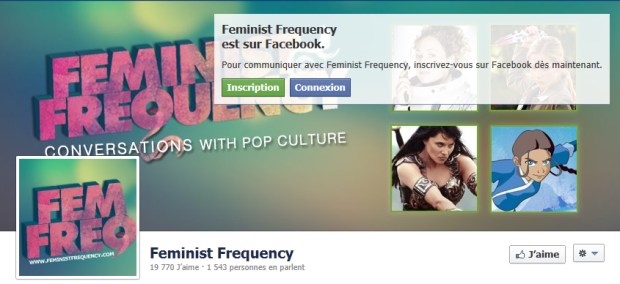 And we have feminist twists that we can follow! “Feminist” hulk is an amazing feminist twitter profile that I love to follow because it is hard not to laught!
And we have feminist twists that we can follow! “Feminist” hulk is an amazing feminist twitter profile that I love to follow because it is hard not to laught!
Thanks to twitter feminism is now following you!
*We need feminism to do our duty as women, mothers, employees or simply for not being judged…we don’t need to be perfect (translation of the twitt)
If after all this you think that they are not enough messages and expression for feminism, I don’t know what to add to convince you. We can’t deny that internet changed the way we live. Everyone has a voice. The only thing you need is a computer and the wifi.
Dear internet, Mozilla, google, facebook, twitter ect… thank you for being awesome feminist friends!






















